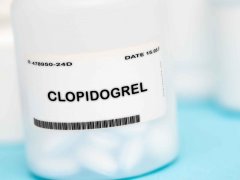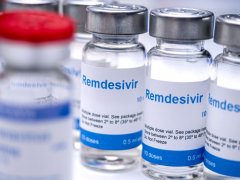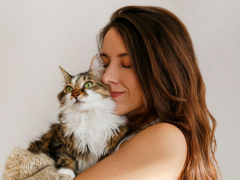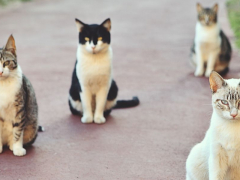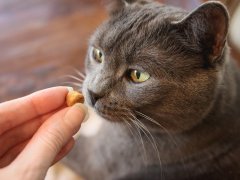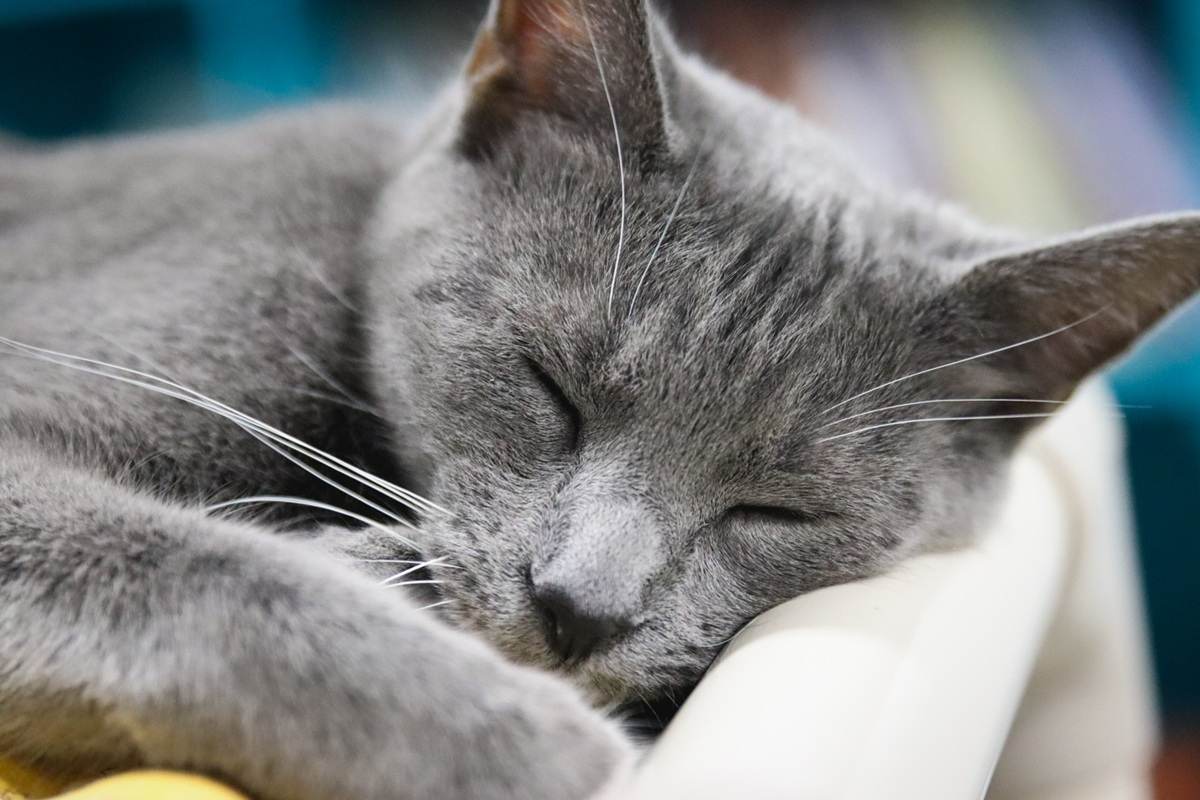
Kirsten McCarthy / Cats.com
Bexacat is the brand name for the antidiabetic medication, bexagliflozin. In this article, you’ll learn how Bexacat works to treat diabetes in cats, precautions that must be considered, and what you need to know to help decide if this is an option for your diabetic cat.
Bexacat for Cats Overview

About Bexacat for Cats
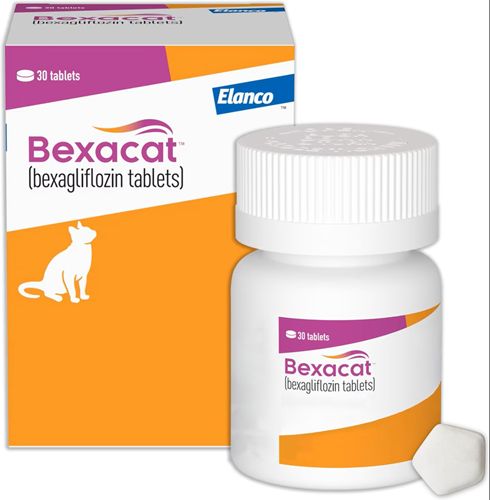
Bexacat is an alternative to insulin injections, which many cat owners dread. It cannot be used if insulin therapy was already started in a diabetic cat.
Bexacat is a brand name for the active ingredient bexagliflozin, an FDA-approved version of the medication for cats.
Bexagliflozin is a sodium-glucose cotransporter 2 (SGLT2) inhibitor. SGLT2 inhibitors act as antidiabetic medications.
SGLT2 is responsible for reabsorbing a majority of glucose that ends up in the urine. In diabetics who are untreated, glucose in the bloodstream (blood sugar) will reach a certain threshold before it will start to appear in the urine.
It is very common for diabetics who are not treated or not regulated to have excessive amounts of glucose in their urine. High amounts of glucose in the urine act as a diuretic, causing increased urination and increased drinking to compensate. This is why one hallmark of diabetes is an excessive need to pee and excessive thirst.
SGLT2’s job is to keep glucose in the bloodstream. In a normal cat, this is important for daily function. But for diabetics, where excessive glucose is present already in the bloodstream, this keeps blood sugar very high.
SGLT2 inhibitors work by blocking SGLT2’s reabsorption of glucose, allowing more of it to end up in the urine and be peed out.
As the name implies, SGLT2 inhibitors also block renal sodium reabsorption but the significance of this property in veterinary patients is not known.
Bexacat is an oral medication option for newly diagnosed diabetic cats. Most cats with diabetes have a form very similar to type II diabetes in people. In this form, insulin is still produced by the pancreas but the body is resistant to its effects.
While very rare, it is possible for a cat to have more of type I diabetes where insulin is not being produced by the pancreas (insulin-dependent diabetes mellitus).
This difference is very important, because adequate insulin production by the body must be occurring for SGLT2 inhibitors to be used safely and effectively.
Bexacat cannot be used in diabetic cats who have already been treated with insulin. This is because use of insulin with an SGLT2 inhibitor or in a cat experiencing withdrawal of insulin and started on an SGLT2 inhibitor has been associated with an increased risk of diabetic ketoacidosis (DKA) and euglycemic DKA.
Unlike with insulin use, the dose of an SGLT2 inhibitor is not altered based on blood sugar readings. However, blood sugar monitoring is still an important part of safe practice with this medication.
Dosing Information for Cats
The following information should not be used to replace a veterinary visit or alter your vet’s prescribing information. You should never use a human medication in your cat that was prescribed for you or a family member without consulting your own vet.
- The FDA-approved dosage for Bexacat is 15mg given orally every 24 hours.
- The dose of Bexacat is given once daily regardless of blood sugar levels.
- Bexacat should be given at about the same time each day.
- Bexacat can be given with or without food.
How To Administer Bexacat to Cats
Bexacat is given as a tablet. While not chewable, it is flavored, hopefully making it easier to give. Some cats may allow you to hide the tablet in their soft/wet food. Others may prefer taking it with a treat, like a Pill Pocket. For tips on how to administer Bexacat this way, see our article on hiding pills in food.
Although flavored, some cats will not take any medication in their food. You may still need to administer the tablet directly by mouth to ensure your cat takes the medication. For help on how to give your cat a tablet medication by mouth, see our article on how to give your cat a pill.
Side Effects of Bexacat for Cats
Expected Side Effects
There are some signs seen with diabetes that you will continue to see if your cat is taking Bexacat. It’s important to be aware of these, especially if you have previous experience treating a cat with insulin.
1. Increased thirst and urination
Because Bexacat pushes glucose into the urine, the diuretic effect glucose has will still be present. This means that increased urination and increased thirst may still be present even if the blood sugar may be at normal levels.
2. Glucosuria (glucose or sugar in the urine)
If you have previous experience using urine dipsticks, it’s important to be aware that these will not assist in monitoring glucose in your cat on an SGLT2 inhibitor. You will continue to see abnormal glucose results on a dipstick. Glucose in the urine may in fact be higher than it was prior to starting Bexacat, as increasing the amount of glucose evacuated in urine is how the medication works.
3. Increased hunger and eating
The loss of excessive glucose in the urine will lead to what is called caloric wasting. The body is essentially dumping a lot of calories in the form of sugar into the urine where it can’t be used. This will prompt an increased need by the body to consume more calories.
4. Ketonuria
Seeing ketones in the urine may be expected in mild amounts but still only affects 10% or less of cats. This may occur because glucose still isn’t being fully utilized by the body being on Bexacat. Some fat breakdown into ketones will still occur. High levels of ketones (2+-3+ on a urine dipstick) would be concerning as abnormal and should warrant a vet visit to check blood serum ketone levels.
Blood serum ketone (BHB) levels above 25 mg/dl may require immediate discontinuation of Bexacat.
5. Adverse Effects
Side effects that are not necessarily part of an SGLT2’s method of action may also be seen. These are grouped according to the percentage of their likelihood based on clinical studies.
30-40% of cats
- Vomiting
- Diarrhea/loose stool
- Reduced or absent appetite
- Elevated blood urea nitrogen (BUN) on blood work
- Increased urine specific gravity/urine concentration
- Increased serum feline pancreatic lipase (fPL) on blood work
22% of cats showed low glucose measurements (65 mg/dl or less). However no signs/symptoms of low blood sugar were seen in the cats.
10-20% of cats
- Lethargy/lack of energy
- Dehydration
- Weight loss
- Urinary tract infection (excessive sugar in the urine will attract bacteria)
- Elevated liver enzymes
- Elevated pancreatic enzymes
- Elevated symmetric dimethylarginine (SDMA)
1-10% of cats
- Behavioral changes
- Inappropriate urination
- Elevated calcium levels
- Excess protein in the urine
- Elevated creatinine on blood work
- Elevated total bilirubin on blood work
- Development of diabetic ketoacidosis
- Euglycemic diabetic ketoacidosis
- Pancreatitis
- Pancreatic necrosis
- Hepatic lipidosis
- Anemia
- Peritonitis
- Urothelial carcinoma (cancer of the urinary tract)
- Death
The less common but more serious adverse effects are most often seen within the first week of treatment.
Most Serious Side Effects of Bexacat for Cats
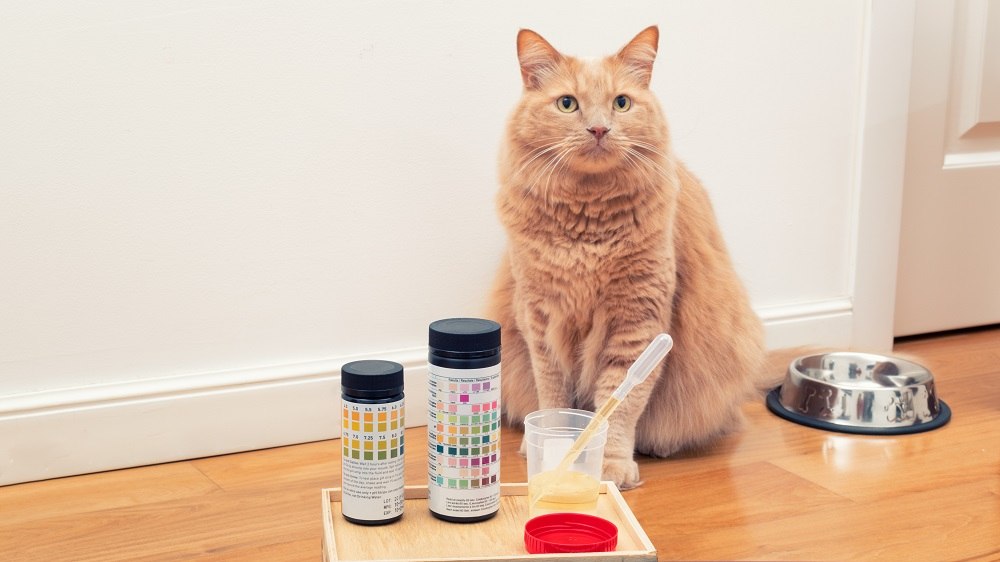
Urine strips like these can be used at home to screen for ketones. Rare trace ketones may be normal but a regular finding of ketones while taking Bexacat should warrant an urgent veterinary medical visit. Yaya photos / Shutterstock.com
Diabetic ketoacidosis (DKA) is the most serious side effect risk of using an SGLT2 inhibitor like Bexacat. Uniquely, a specific form of DKA called euglycemic DKA can be seen with use of these medications in cats.
Diabetic ketoacidosis is a very serious condition that occurs when the body cannot utilize blood sugar. Glucose results from the breakdown of basic sugars and carbohydrates in food. Glucose is needed for fueling the body for all of its daily functions. When glucose cannot be used properly by the body, the body will start to break down fat as an energy source instead.
A byproduct of breaking down fat is a ketone. While ketones are okay for short durations when needed, excessive build-up leads to the body’s chemical state shifting from neutral to more acidic, called acidosis. Acidosis causes severe illness.
DKA can occur in diabetic cats who are not being treated with insulin or who are poorly regulated.
DKA is a serious potential side effect with use of any SGLT2 inhibitor like Bexacat. This is because SGLT2 inhibitors do not actually assist with glucose use by the body. They only aid in keeping blood sugar lower by flushing it out in the urine.
To make things more complicated, a specific form of DKA called euglycemic DKA can be seen with SGLT2 use. In most cases of DKA, the blood sugar will be very high. A very high blood sugar combined with other signs of illness can clue a veterinarian into DKA being a concern.
But with SGLT2 inhibitors, the blood sugar may actually be normal (euglycemic) because excess glucose is being pushed into the urine. This can make diagnosing DKA more challenging.
Diagnosis of euglycemic DKA can still be determined by checking blood and urine ketone levels. A high blood ketone level (or possibly a high urine ketone level) in the face of a normal blood sugar in a cat currently being treated with an SGLT2 inhibitor would be considered diagnostic for euglycemic DKA.
Euglycemic DKA could occur in a cat on an SGLT2 inhibitor at any time. It’s very important to closely monitor for signs of concern. Signs of DKA can include:
Precautions
It’s important to understand the difference between an SGLT2 inhibitor and treating diabetes with insulin. Although it’s an oral medication and may come with less maintenance for treating diabetes in cats, Bexacat should not be considered an easier “replacement” for insulin therapy.
When treating a diabetic cat with insulin, the goal is essentially to replicate the body’s normal process of producing insulin to carry glucose into cells where it can be used. SGLT2 inhibitors do not actually perform the same function.
Cats being treated with insulin may be able to go into diabetic remission. This is where the body returns to being able to regulate blood sugar on its own without the need for insulin injections. Approximately 50% of cats on insulin therapy may go into remission. This is best achieved within 6 months of diagnosis. Diabetes may recur, but more than half of cats that go into remission will remain in remission.
Cats on SGLT2 inhibitors will not have the opportunity to go into remission. This is important to keep in mind when considering what approach to take with your kitty if diabetes is newly diagnosed.
Monitoring Cats on Bexacat
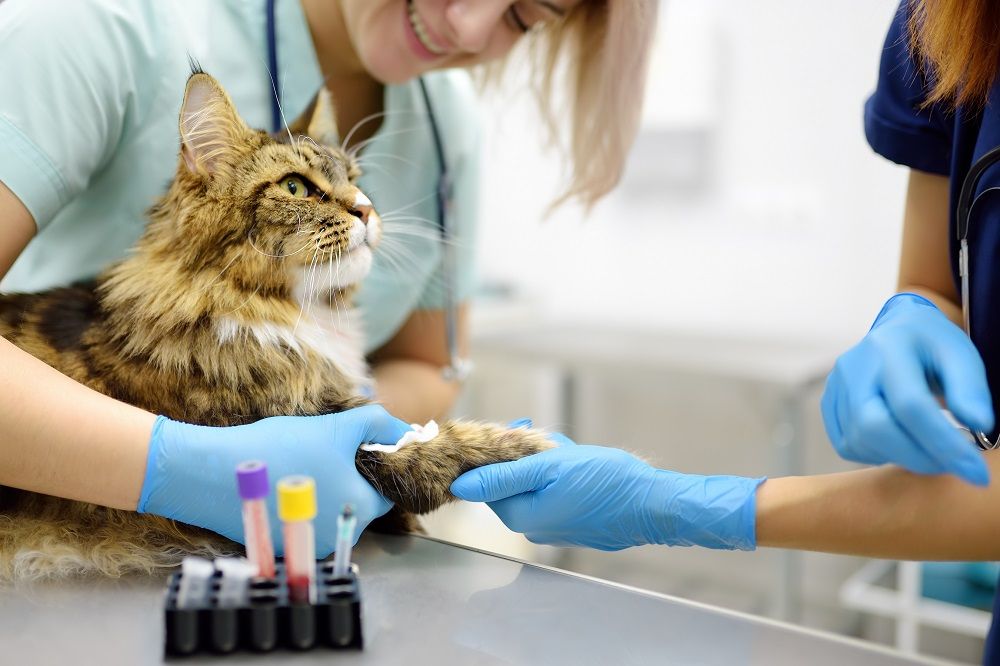
Even though Bexacat may seem easier to give than insulin injections and doses don’t change based on blood sugar, very close monitoring of lab work is crucial to ensuring safe use. Yaya photos / Shutterstock.com
Although blood glucose level is not routinely monitored in cats on SGLT2 inhibitors for dose adjustment as would be done with insulin, careful monitoring of body function parameters is crucial for safe use.
Prior to the use of Bexacat, the following is recommended to be evaluated:
- Feline pancreas-specific lipase (fPL) to evaluate for acute or chronic pancreatitis (an ultrasound may also be needed for full assessment)
- Blood or serum beta-hydroxybutyrate (BHB), which is the principal ketone to check for as a sign of diabetic ketosis or ketoacidosis
- Bloodwork to assess kidney health, liver parameters, cholesterol and triglycerides, and electrolyte status
- Hydration status
- Current appetite and food intake
- Screening for a urinary tract infection (this is common for new diabetics)
At 2, 4, and 8 weeks after starting treatment with Bexacat, the following monitoring is recommended:
- Physical examination (checking weight, hydration status, vital parameters)
- An 8-hour blood glucose curve
- Serum fructosamine (which represents the average blood glucose concentration over the previous couple of weeks)
- Measurement of blood serum ketones (BHB)
By 8 weeks, if a newly diagnosed diabetic is showing poor glycemic control on Bexacat, the medication should be discontinued, and insulin therapy should be started instead.
If a cat is showing good control, no concern for elevated ketone levels by 8 weeks, and Bexacat will be continued, the following should be monitored periodically:
- How well clinical signs of diabetes are controlled
- Body weight
- Appetite
- Fluid intake/urine output
- Blood glucose
- Fructosamine
- Blood serum ketones (BHB)
- Feline pancreas-specific lipase (fPL)
- Liver values
- Serum cholesterol and triglyceride levels
- Calcium
- Monitoring for urinary tract infections
Because SGLT2 inhibitors cause glucose to be excreted more in the urine, monitoring urine glucose levels on a dipstick is of little value.
How often to pursue monitoring for your cat should be discussed with your vet. However, checking lab work parameters, weight, and general health condition should be evaluated every 3-6 months or sooner if health concerns arise.
Any changes in appetite, signs of vomiting, diarrhea, or changes in general health at home should prompt an immediate evaluation at your vet’s office.
Overdose and Emergencies
Doses of up to 75 mg per cat (5 times the approved dose) for about 6 months have been evaluated. Most signs of toxicity appeared as more pronounced versions of the medication’s primary side effects. These include:
- Vomiting
- Diarrhea
- Increased food consumption
- Increased urination
- Excessive glucose in the urine
- Ketones in the urine
- Dehydration
A low blood sugar was rare, but reported in some cats.
Euglycemic DKA has not been documented but is a suspected risk of acute toxicity with any SGLT2 inhibitor.
If you suspect your cat received an overdose of Bexacat make sure to immediately contact one or more of the following for advice:
- Your veterinarian
- ASPCA Animal Poison Control Center (1-888-426-4435)
- Pet Poison Helpline (1-855-764-7661)
Potential Drug Interactions With Bexacat
At the time of this writing, Bexacat is still a relatively new medication. All medication interactions with Bexacat are not known. The following list represents interactions that have either been reported or are theoretically possible.
Unless specifically indicated, this list does not mean the following medications cannot be used with Bexacat. Weigh the potential risks and benefits and make sure to discuss thoroughly with your vet all medications your cat is currently receiving.
- Angiotensin-converting enzyme (ACE) inhibitors (enalapril, benazepril): may increase low blood sugar effects. May increase risk for low blood pressure and acute kidney injury, especially in dehydrated cats.
- Antihypertensive agents (amlodipine, telmisartan): may increase risk for low blood pressure and acute kidney injury, especially in dehydrated cats.
- Beta blockers (atenolol, propranolol): may increase low blood sugar effects. May increase risk for low blood pressure and acute kidney injury, especially in dehydrated cats.
- Corticosteroids (prednisolone): may decrease the blood sugar effect lowering of Bexacat
- Diuretics (furosemide/Lasix): added low blood pressure and diuretic effects may occur.
- Estrogens: may decrease the blood sugar lowering effect of Bexacat
- Fluoroquinolones (marbofloxacin, pradofloxacin): may increase the blood sugar lowering effect
- Insulin: serious adverse effects are more likely to occur in cats previously treated with, or currently receiving, insulin injections. Bexacat should not be used in cats who have previously received insulin injections or are currently on insulin therapy.
- NSAIDs (robenacoxib, meloxicam): Acute kidney injury risk is increased in humans experiencing dehydration while taking an SGLT2 inhibitor
- Progestogens: may decrease the blood sugar lowering effect
- Selective serotonin reuptake inhibitors (SSRIs) (fluoxetine): may increase the blood sugar lowering effect.
- Sulfonylureas (glipizide): additional blood sugar lowering effects may occur. Use of glipizide with SGLT2 inhibitors has not been evaluated in cats.
How To Store Bexacat
Bexacat tablets can be stored at room temperature between 68 degrees F and 77 degrees F (20 degrees C to 25 degrees C).
Drug Dosing Disclaimer: We are only able to provide doses for medications that are FDA approved for use in cats and only as the label guidelines dictate. For medications that are used off-label we can only provide guidelines and safety information for use. Safe and appropriate dosing for off-label medications can only be determined by a primary care veterinarian.
We encourage you to work with your veterinarian to determine if a particular medication is appropriate for your cat. Changing or adjusting a dose for your cat on your own without consulting with a veterinarian can carry risk. We do not encourage use of medications prescribed for human use in pets without first consulting with a primary care veterinarian.
-
A Budde, J., & A McCluskey, D. (2023). Bexagliflozin [Professional app]. In Plumb’s Veterinary Drug Handbook (10th ed.). Wiley Blackwell.
-
U.S. Food and Drug Administration. (2024a, April 3). Dear Veterinarian Letter advising veterinarians of important safety conditions associated with the use of Bexacat (bexagliflozin tablets) for improving glycemic control in certain cats with diabetes mellitus. U.S. Food And Drug Administration.
-
Williams, K. (n.d.). Diabetic Ketoacidosis in Cats. VCA Animal Hospitals.
-
Llera, R., & Buzhardt, L. (n.d.). Diabetic Remission in Cats. VCA Animal Hospitals.
-
Gottlieb, S., Rand, J. S., & Anderson, S. T. (2024). Frequency of diabetic remission, predictors of remission and survival in cats using a low-cost, moderate-intensity, home-monitoring protocol and twice-daily glargine. Journal of Feline Medicine and Surgery, 26(4). https://doi.org/10.1177/1098612x241232546
